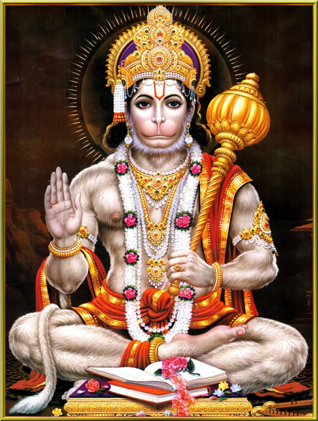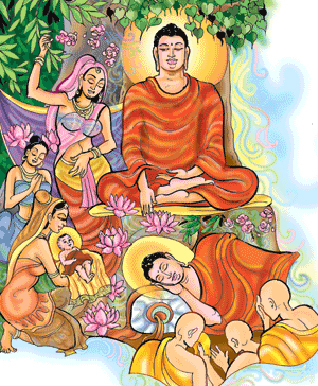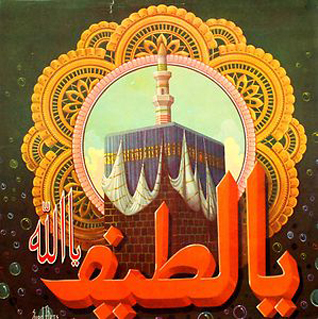Daily Fix
Picture Perfect
T. SHER SINGH
For several weeks now, every time I look out of any of our windows, the most extraordinary sight greets my eyes: a winter wonderland of exquisite and unparalleled beauty.
True, winters here in Canada are c-c-old and l-o-n-g, but they offer, in their own way, much joy and delight for the soul that none of the other seasons are able to convey.
And this year, winter has been extra special. It harks back to the old-style winters we used to have … before the advent of ’global warming’ and its aberrations. In fact we haven’t had a winter like this, to my memory, since 1976-77, the last time I remember seeing such an all-pervasive and persistent blanket of pristine snow.
But strangely, each time I linger by a window to marvel at nature’s valiant attempt to cover our blemishes -- yes, I must confess, I am one of those who enjoys the outdoors best when viewing it from the comfort of the indoors! -- my thoughts drift to an annual ritual I was privy to in my childhood.
Far removed from here where I now live and where I have lived for the last 43 years, I am transported back to the Gangetic plains of Bihar at the peak of the Indian summer, when temperatures would seethe past the 50 degree-Celsius mark. Specifically to the day when the calendar salesmen would arrive at my father’s store in Patna.
They would hail from an obscure town deep in the South of India called Sivakasi. Rarely ever heard of in the north, even though it had a virtual monopoly on three industries which touched our lives in every nook and corner of the land: factories that made fire-crackers and matches; and printing presses.
Every now and then, the name of the town would make a brief appearance on the front pages of the newspapers when a fire-cracker factory would blow up sky-high in an accident, killing dozens, sometimes hundreds, of under-age workers. But the location itself would remain obscure, over-shadowed by the tragedy, and then once again relegated to oblivion as soon as the story faded away.
Oddly, I knew of Sivakasi well but only because the name would be emblazoned on the covers of the stacks of sample albums left behind by the calendar salesmen who would fan out across the country during the lazy, slow, heavy summer days to help them secure orders on behalf of the printing presses in Sivakasi -- the manufacturers of all the calendars that would herald each new year by festooning the walls of every home and place of work, indeed every wall in every private and public space in the country.
My father was big on calendars, ordering about 20- to 30,000 every year to advertise his store, thus being their biggest customer in the region. He was good at promoting his business, an art he had self-taught through instinct and passion for his work -- long before the very idea of ‘marketing’ was turned into an industry and, later, a scam.
The annual ritual of sifting through dozens of large albums, each containing a couple of hundred pages of brightly-coloured images, had attracted my attention even as a toddler. As the years passed, it didn’t take long before I had ensured myself a place as an integral part of the decision-making as to which images would adorn our calendars -- advertising “M.I.T. MOTORS” -- come the new year.
The parameters of the task were clearly demarcated.
My father had figured out that religious images were the most popular with our customers. And, since our business clientele came from a variety of faith backgrounds, it made perfect sense to cater to their respective leanings.
Which meant that we would print our calendars not in one design or image across the board, but in a total of approx a dozen different ones.
There would be two or three, for example, with Hindu images. Since we lived in the heart of the Hindi/Hindu belt, the majority of our customers were Hindus.
Then there was to be another calendar displaying a Muslim icon. A small but sizeable percentage of the local population was Muslim.
Two or three for the Sikhs -- who were small in number in the general population but still significant because of their domination in the transport industry.
One for the Christians made perfect sense. There was a miniscule number known as “Anglo-Indians” -- a mixed-race legacy of the British occupation which had ended only a few years before. They were Christians. And so were the schools that we, my siblings and I, attended by choice … because they happened to be the best schools around, vastly better than the alternatives.
The Jains were insignificant in number, but many of them were known to my father because they were mostly in business, some of them even his competitors. How could he overlook them?
Buddhists there were none … anywhere. Strange, because the city I lived in was once the capital of a Buddhist empire that compared with its Roman and Greek counterparts, arguably even greater and more powerful. Within a hundred-mile radius of us was the very heartland of Buddhism -- where Buddha was born, where he received enlightenment, where he taught his disciples, and from where his teachings then spread to other parts of the world.
But the faith had been wiped off the very face of the Indian earth, leaving little else but ruins of monasteries, temples and universities -- and no adherents -- anywhere in the land, first by Muslim bigotry, and then by Hindu hegemonists.
I was born and brought up, for the first 20 years of my life, in Ashoka’s capital, a mere 40 miles from Bodh Gaya, and about 60 miles from Nalanda and Rajgir, but had never met an Indian Buddhist.
Still, my father, knowing the region’s Buddhist heritage, wanted to honor the fact by always having one image selected from the Buddhist firmament.
So, my annual task -- one I had appropriated not because I had any skills, but simply because I could -- was to select the images, have them approved and finalized by my father, in preparation for the salesmen’s return a week later to firm up the orders. In an age before television or any of the toys we take for granted today, the exercise was a welcome distraction ... and a source of so much playful pleasure.
The Hindu selection almost always had a Krishna. The most popular image was of him as a child ’makhan-chor’ -- ’Butter thief‘. Cute, it always brought a smile. Then, maybe one of Shiva and Parvati, or Durga, or Saraswati. Every now and then, one of Hanuman.
The Muslim choices were limited. Each year it would be a different perspective of the Kaaba.
The Sikh ones would range between Guru Nanak, Guru Arjan and Guru Gobind Singh. Sometimes Guru Harkishan or Guru Tegh Bahadar. Occasionally, one of the heroes: Ranjit Singh, Akali Phula Singh, Baba Deep Singh, Hari Singh Nalwa, Banda Singh Bahadar …
The Jain and Buddhist ones were easy. Mahavir and Buddha invariably had to be in the picture, respectively.
The Christian choice almost always had Mary and a baby Jesus. Like the cute baby Krishna, it had universal appeal.
There was one final choice … which brings me (admittedly, via a convoluted and meandering route) … to the present, as I sit here by a window in Mount Forest, Canada, on a minus-20 degrees Celcius morning..
With the entire gamut of religious imagery taken care of, there was one final one that was a must every year. A ’neutral’ or ’secular’ one, which met several needs: if one didn’t know of a customer’s religious affiliation, it came handy. Or, there were always those who had no interest in religious icons: university professors, yuppies (yes, we had them, though it was long before the term was invented), atheists and agnostics, pseudo-liberals and so-called ‘broad-minded’ intellectuals, and the like …
They wanted something more ‘sophisticated‘. Something that stirred other feelings, something less base than those steeped in religion or superstition.
Through the years, we learnt that there was one image that would light up a face instantly, and bring peace to the eyes. Always accompanied by a long-drawn “Ah-h-h-h …”, and followed by a sigh.
Thus, a particular scene became a staple for each year, though always a different image had to be carefully selected in order to add novelty to the new year.
No matter what, it had to be a winter scene. A snow-covered landscape; a cottage, with a smoking chimney; a sled; a snowman; horses …
It didn’t matter that none of us had ever seen snow in our lives, or even knew where the scene could possibly be located. The summer would be long gone by the time the calendars arrived, ready for distribution, in late October. They’d be pulled out on Diwali and on that day in November -- with our diluted version of winter still weeks away -- the distribution would begin.
The mere sight of that cold, wintery scene would be received with instant delight, welcomed with more warmth than any other calendar we had to offer. Every year it was the hottest choice … which meant that it had to be kept a secret and under wraps, brought out only for special clients. The rule was that each customer was allowed only one calendar, and was handed one, rolled and rubber-banded, the selection made and based on our assessment of which community he or she belonged to.
I don’t know why we didn’t make life easy for ourselves and only ordered the entire lot in the winter image. Life would have been simpler, with no risk of a mini-riot breaking out when someone found out that there was a choice. It would’ve obviated the need to tell the endless white lies over the course of the next three months until the stock ran out … “Sorry, there’s only one type this year!” “Sure, you’ve seen another one, but those ran out ages ago!”
But I think my father kept the Winter calendars purposely down to a small, limited number. It made it special. Rare. Precious. Wanted …
I look out of the window this morning and I now understand why I love our winters so much, even while everyone has been complaining endlessly. It’s the national pastime, to constantly gripe over why and if we deserve such weather, and when it’ll make way for that other wonderful season, Spring.
I know why I like the Smurfy, Disney-movie, Wedding-cake look of it all.
It’s because I am living in the very midst of that winter scene that was the epitome of our dreams -- of all of us -- complete with all the blessings I had ever imagined then. Or hoped for.
I am living my dream.
February 17, 2014
Conversation about this article
1: Andrew Singh Kareckas (Toronto, Ontario, Canada), February 17, 2014, 1:09 PM.
That was a terrific read, Sher. Great to read that you are living your dream.
2: Manjit Kaur (Fredrick, Maryland, U.S.A.), February 17, 2014, 10:09 PM.
A great article. It brings forth my own memories from my childhood in Kenya. Every New Year's we would receive cards from U.K. and Canada and some cards would have the most beautiful winter scenes. I remember my two favorite scenes were of snow too. One of the landscapes would be of a cottage set off the road with a short wall with overgrowing berry bushes, a small frozen pond, smoke pouring from the chimney, heavy evergreen trees around the house, and of course snow everywhere. To make this picture even more stunning there would be glitter on the snow and trees. My other favorite picture would be of a Christmas shopping scene of a couple walking down a street that was lit with lamps which had red bows tied on them and the small shop windows decorated with Christmas ornaments. In this scene too there would be snow everywhere and children playing with snow balls. These pictures were so exciting and I couldn't wait that maybe someday my dream would come true and I would be able to see snow for real. After living in U.K., Canada and USA for the past 42 years and two decades on the east coast - this winter I am, I confess, tired of the snow. I usually tease a friend for counting down to spring but now I too am ready to hear the birds chirping and the new bright-green leaves to arrive.
3: Aryeh Leib (Israel), February 18, 2014, 4:20 AM.
Maybe you could send some of that snow our way, if you've got more than you need! We're currently experiencing the driest winter I can remember - and I've been here over 30 years. What makes the situation all the more pressing is the fact that winter is when we get ALL our precipitation for the entire year! As the saying goes, "One man's ceiling is another man's floor".
4: Baldev Singh (Bradford, United Kingdom), February 19, 2014, 7:24 PM.
I like the last part of this article because yesterday I watched the film "The Book Thief", courtesy of The Times newspaper and it featured a snowy winter and powerful storyline involving sectarianism! So the different themed calendars based on religion should ultimately give way to a universal mother Earth or mother Nature theme that as one Humanity we can all relate to without finding anything different to hate and kill each other as they do quite periodically in that part of the world! Nature, both its savagery and its breathtaking beauty, does not discriminate.






